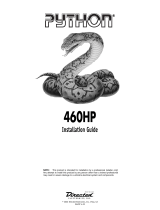© 2008 Directed Electronics- All rights reserved.
3
Contents
Primary Harness (H1) Wire Connection Guide .............................................................. 4
Primary Harness Wiring Diagram.............................................................................. 4
Primary Harness Wiring Instructions ......................................................................... 4
Door Lock Harness (H2), 3-PIN Connector ................................................................ 11
Plug-In LED and valet/program switch......................................................................... 12
Programmer Interface, 3-Pin BLACK Plug .............................................................. 13
Mounting the Antenna receiver ............................................................................... 13
On-Board Dual-Stage Shock Sensor ............................................................................. 14
Optional Sensor Harness, 4-pin Connector .................................................................. 15
Programming Jumper.................................................................................................... 16
Light Flash Jumper .................................................................................................. 16
Bypassing Sensor Inputs ................................................................................................ 17
System Features Learn Routine ..................................................................................... 18
System Features Menus ................................................................................................. 21
Menu #1 - Basic Features ......................................................................................... 21
Menu #2 - Advanced Features ................................................................................. 22
Feature Descriptions ..................................................................................................... 22
Menu #1 - Basic Features ......................................................................................... 22
Menu #2 - Advanced Features ................................................................................. 24
Transmitter/Receiver Learn Routine ............................................................................. 27
Transmitter Configurations........................................................................................... 30
Standard Configuration .......................................................................................... 30
Three-button configuration - Optional not included ............................................... 30
Diagnostics.................................................................................................................... 31
Arm/Disarm Diagnostics ......................................................................................... 31
System Status Chirps ............................................................................................... 31
Table of Zones ......................................................................................................... 32
Long Term Event History ............................................................................................. 32
Multi-Level Security Arming ......................................................................................... 33
Optional Vehicle Recovery System (VRS) ..................................................................... 34
Nuisance Prevention® Circuitry ................................................................................... 34
Rapid Resume Logic ..................................................................................................... 34
Troubleshooting ............................................................................................................ 35




















